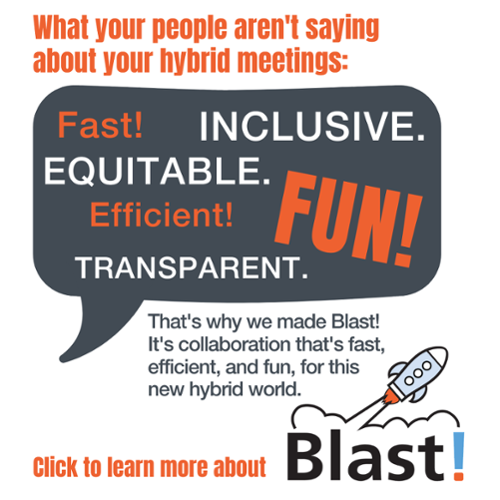What best practices set the stage for employees and other audiences to share sensitive, challenging, and aspirational perspectives? Which aspects are most important, especially, when the perspectives relate to authority figures, organizational leaders, officials, or anyone else participants answer to in some fashion?
Within the Brainzooming approach, we’ve continually found online surveys and collaboration platforms (such as our Blast! offering) serve as productive environments for generating audience feedback, even in challenging cultures.
4 Best Practices for Productive Feedback
From these experiences, we’ve developed a list of four best practices that lower or eliminate concerns that participants face in sharing authentic, honest perspectives.

1) Share what feedback is most helpful
Participants aren’t inside your head with full knowledge of what will help you and what won’t. Whatever the format, provide guides, structure, or direct requests to help individuals understand the feedback you are seeking. While doing that, provide enough room for people to share perspectives in areas beyond where you pointed them.
2) Provide opportunities for anonymous feedback
Invariably, we hear from people sharing both positive and challenging ideas, that an anonymous environment eliminates most eggshells that they feel they walk on relative to sharing feedback. Executives even report that anonymity frees them to share more authentic responses.
3) Make a conscious decision about the visibility of feedback
There’s value in providing visibility to other participants’ reactions. Doing so can prompt others to feel safe sharing their own thinking. The exception? If you have, or suspect, that you have an overtly negative minority of participants in your midst. Sharing their perspectives with everyone can provide an unwarranted platform to spread dissent. That’s why there’s no clear answer on this practice. You’ll need to choose what’s best based on your organizational situation.
4) Use an Intermediary (or two) to provide space to share
While you, as an authority figure, may like the dynamic of engaging people directly for feedback, that can’t be the only channel. An intermediary (via an anonymous online survey, a facilitator asking questions and capturing the input, or employing an online platform that promotes open sharing) all separate you from the environment where participants are offering perspectives. This layer can be game changing in generating greater feedback that’s more authentic. It’s also possible to create another intermediary level by having an unaffiliated third party to process and report the comments.
Implementing These Best Practices
To the extent that you can create an environment that reflects all these practices, you’ll increase the volume and impact of audience input.
An easy, one-stop way to implement all these practices?
Introducing our Blast! environment in your audience interactions. We designed this dynamic online collaboration environment to incorporate these and other methods to increase audience feedback and shorten the time it takes to gain the perspectives you need to develop strategy for your organization.
Let’s talk about the possibilities that Blast! can create for you. – Mike Brown




